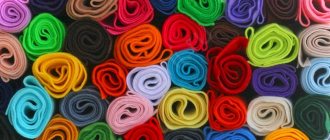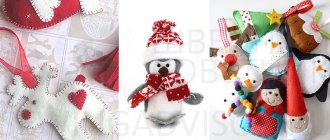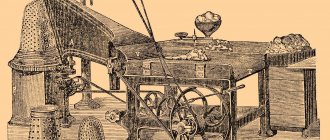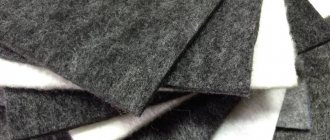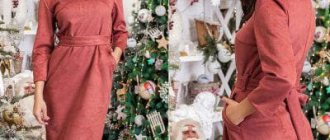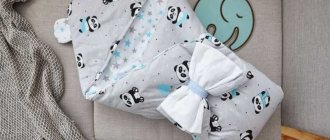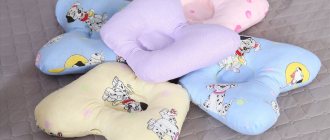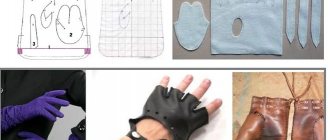Felt
Felt, or rather simulated felt, is the most common base for embroidery. But the sewing stores in our city didn’t have it, so I ordered from the online store.
This felt is made from a mixture of natural and artificial fibers. These fibers are skillfully bonded to each other through heat, friction, moisture and various other processes.
Felt has so many different shades to suit every taste! A distinctive feature of simulated felt is that it has virtually no lint, does not crumble when cut, is plastic, and cannot be torn.
The manufacturer indicates that any fold in the felt can be straightened by simply moistening it with water. But according to my observations, straightening a sheet of felt from the package is not so easy. My method is to moisten the felt and then heat it with an iron. And there were no folds left from the packaging on the felt. It’s true that felt is no longer so hard.
The disadvantage of simulated felt is that it stretches when working with large embroidery.
But don't be upset! This feature of felt helps fill in the gaps created by bending the embroidery on the bracelet base with beads. In addition to everything said above: the felt is practically lint-free. The needle passes smoothly and without obstacles, so the quality of embroidery is noticeably improved.
Felt is definitely a good base for embroidery. Practice and everything will work out.
Creating a felt applique - master classes
In order to master the technique of making a felt composition, you can make several items for interior decoration.
Heart shaped magnet
- Cut a heart-shaped blank from felt and sew it with a decorative stitch, for example, a buttonhole stitch.
- Place the decoration elements on the workpiece in accordance with the sample and secure with decorative stitches.
- Use a heat gun to glue the magnet onto the back side. You can also make a three-dimensional heart; for this you will need to cut out two blanks, and after decorating, sew both parts together by putting a little padding polyester and a magnet inside.
- You can also use beads and sequins to decorate a magnet heart.
Felt sun
This bright figurine can serve not just as a craft, but also as a patch on children's clothing. You need to cut out the sun and rays from bright yellow felt, place them on top of each other so that the lower parts peek out from under the upper ones.
Sew the parts together. The circle in the middle can be further decorated with a chain stitch, placing it in a spiral from the center of the sun. Attach the sun to a cardboard, fabric or felt base and sew it on clothes.
Felt flower
You can decorate clothes, a postcard or a picture with a felt flower. The main detail will be an oval petal with pointed ends. For one flower you will need three of them. The middle petal is laid out on the base for the applique, which is overlapped by the side petals. Next, the side petals are sewn with a buttonhole stitch, and the middle one with darning. Stems and leaves can also be cut out of felt, or can be embroidered or made from decorative cord of suitable thickness.
Painting with an owl
A painting with an owl can become an interesting accent in the interior of a children's room. Older children, who are already bored with cutting out whole figures, can assemble a picture from small parts. Eyes, beak, feathers and paws are attached to the silhouette of an owl, and the feathers should go behind each other, and the paws should go under the figurine. A branch of brown and green felt is “assembled” separately, on which the owl will sit. First a branch is sewn onto the base of the picture, then an owl. The finished painting is glued onto cardboard and inserted into a frame.
Decorative panel
To create a beautiful decorative panel, it is better to print ready-made templates and a color sample. Cut out blanks from felt of a suitable color (blue for the sky, green for grass, brown for tree trunks, etc.). The elements must be basted to the base and sewn or stitched on a sewing machine. As in the previous product, the parts are attached to the base in “layers”, crossing and overlapping each other. Small elements are easier to glue rather than sew. Small flowers made from sequins and secured with beads in the middle will look good on the panel. The finished product is framed.
Felt appliqués are quite easy to make, so even novice craftsmen can handle them. Over time, experience and confidence in your hand will come, and creating felt appliqués will become an interesting activity for children and adults.
Nonwoven
From the variety of all fabrics, you need to choose a fabric whose edge will not fray. And here we, needlewomen, come to the aid of adhesive non-woven fabric. Despite the fact that it is thin, it is quite difficult to tear it with your hands. And most importantly, no matter how ornate your embroidery is, when cutting off excess interlining, its edge will never fray.
The non-woven fabric has two sides: one is smooth, the other has small drops of glue applied to it. Under the influence of a hot iron, the glue melts and the interlining is glued to the material.
Genuine Leather
It is quite an expensive pleasure to use genuine leather both for bead embroidery and for interior decoration of products.
But there are jewelry in which beadwork should not completely cover the base. For example, in addition to the main beadwork, lace will look beautiful, and then the base must be beautiful.
And the reverse side of the jewelry is also leather; among other things, it must be thin. It is best to take (0.3 - 0.5mm) Italian leather.
What types of fabric can be glued with an iron?
Theoretically, synthetic materials can be used for this gluing method, but there is a high probability that under the influence of heat the fabric will wrinkle or melt and holes will appear. You can layer them with polyethylene and iron them, but in this case the glued area will become hard. In this case, it is better to glue with special adhesive pads, for example, “Flizofix”. Among them, you can choose a material with a minimum thickness or a canvas with a detachable adhesive layer, then the gluing area will be completely invisible.
The gluing technology is as follows: an adhesive material is laid between two layers and ironed. Then the fabric is allowed to cool and the quality of the connection is checked. Using the same method, you can seal a tear in the canvas by placing a piece of Flizofix on the wrong side.
Canvas
Bead embroidery on finished canvas is usually used in the making of paintings. Such products are distinguished by the even inclination of the beads and the correctness of their shapes. And most importantly, you can use absolutely any cross stitch pattern.
For such work, canvas No. 14 and Czech beads No. 10 are suitable. If the canvas is rigid, then there is no need to compact it during the embroidery process.
The most difficult thing, it may seem, is securing the knot in such a way that it will not slip into the holes of the canvas.
Some craftswomen manage to embroider on canvas, and then insert these embroidered elements into their works, for example, a necklace. These elements are particularly smooth and precise in execution.
In order not to miss master classes and other news, join the VKontakte group or subscribe to Instagram. All my works can be found on the website in the Shop section.
Felt is a material that is often used in needlework. It makes interesting crafts, toys and decorations. But due to various reasons, craftswomen are constantly in search of an answer to replacing it.
Alternative solutions
Craftswomen are trying to replace felt with another fabric because:
- such fabric is a very expensive pleasure;
- in most cities it is not available at all or is available, but in limited form and quantity.
Based on the experiments of craftswomen, several alternatives can be identified.
1) Viscose napkin for home cleaning.
It looks and feels very similar to thin felt, and its important advantage is that it is not expensive. Napkins are available in different colors.
In the process of making crafts, you should take into account that, unlike felt, a napkin, when wet, loses its original appearance and transforms into shapeless matter. Suitable exclusively for items that will not subsequently require washing or interaction with water.
Sewing denim skirt pattern for a girl, do it yourself
2) Fleece.
This artificial knitted material is somewhat reminiscent of felt, and as an alternative it is used in needlework. It is enough to roll the fleece in several layers. It should be noted that it is soft in structure and is not suitable for products that must maintain a solid shape.
3) Unused thick wool items.
Wool is a very soft material, however, if it is washed at extreme temperatures (in very cold - hot water), it can mat into geofabric, which is perfect for the production of all kinds of products.
This thick material with fibers is used not only for sewing coats, but also for the production of toys. There are a very huge number of types of drape, any of them are used in needlework. Moreover, you don’t have to buy fabric, but give new life to an old coat: cut it into a wide variety of crafts.
If felt is used as a rigid base for the product, then it is possible to change it to:
- a piece of plastic;
- button;
- a round piece of cardboard covered with tape or cloth;
- when a suitable tone is needed, replacing it with a circle of foamiran (a kind of foam rubber used for needlework) will be a fairly excellent option;
- thin polystyrene foam covered with fabric;
- a piece of rough leather.
If you have a device for cutting hard materials, you can use felt - a dense fabric made from felted wool. Thin felt is actually similar in composition to felt and can be applied in the same way.
Main features of the material
It can be classified as dense woolen fabric. It is made from animal wool or down. For the most dense effect, manufacturers douse them with hot steam. In a hardware store, this fabric is already on the shelves in finished form. Layers cut to a certain length and width can sometimes be rolled into rolls or sold in packaging (a set of different colors).
It comes in a variety of colors, so you can make an unlimited number of crafts from it: dolls, jewelry, notepad covers, book bindings and much more. In addition, it is perfectly fastened with ordinary PVA glue, has no front and back sides, and its edges do not crumble.
Thick felt is used for the base, and thinner felt is used for appliqués and small details.
